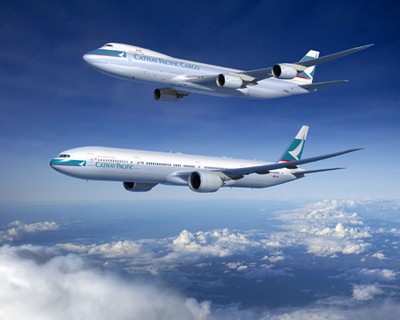Expects A Market For 33,500 New Airplanes Through 2030
In its 2011 Current Market Outlook (CMO) released Thursday in
Paris, Boeing says it can see a $4 trillion market for new aircraft
over the next 20 years with a significant increase in forecast
deliveries. The company's annual commercial aviation market
analysis foresees a market for 33,500 new passenger airplanes and
freighters between 2011 and 2030.

"The world market has recovered and is
now expanding at a significant rate," said Randy Tinseth, vice
president of Marketing, Boeing Commercial Airplanes. "Not only is
there a strong demand for air travel and new airplanes today, but
the fundamental drivers of air travel – including economic
growth, world trade and liberalization – all point to a
healthy long-term demand."
Passenger traffic is expected to grow at 5.1 percent annual rate
over the long-term and the world fleet is expected to double by
2030. The single-aisle market will continue to see strong demand
around the world and is expected to increase its share of the
market. Fleet composition will change significantly by 2030 with
single-aisle jets making up 70 percent of the total.
Robust growth in China, India and other emerging markets will
lead to a more balanced airplane demand worldwide. China, which has
experienced double-digit growth in gross domestic product in recent
years, is forecasted to grow at 7 percent per annum, while South
Asia, which includes India, is forecast to grow at 7.1 percent.

Asia Pacific is forecasted to need the
most new airplanes over the next 20 years and will represent the
largest market by value of deliveries at more than $1.5 trillion.
The region will account for more than a third of new deliveries
worldwide, while the Middle East and Latin America will also
continue to show very strong growth.
European and North American carriers will continue to see demand
for replacement airplanes as they retire older, less fuel-efficient
models. In fact, we predict 94 percent of the European fleet
operating in 2030 will have been delivered after 2011, with
airplanes that are better for the environment, passengers and the
airlines. Forty percent of all new airplanes delivered over the
next two decades will be replacements.
The current industry backlog of more than 2,000 twin-aisle aircraft
shows the strength of this market segment. The continued growth in
long-haul connections will fuel the need for new twin-aisle
airplanes due to the increase in new, nonstop markets. With 1,400
deliveries, twin-aisle airplanes will make up 19 percent of the
total European deliveries during the forecast period.
Liberalization, as well as fragmentation and new mid-size,
long-range airplanes such as the 787 Dreamliner, the 777-200LR
(long range) and 777-300ER (extended range), will increase the need
for intermediate twin-aisle jets. Large aircraft, such as the 747-8
Intercontinental, will make up a market segment valued at $270
billion. While passengers are getting what they want – more
frequencies and nonstop service – rising and volatile fuel
prices are expected to continue to challenge the industry.

On the freight side of the hosue, Boeing projects the world
freighter fleet to increase from 1,760 to 3,500 airplanes.
Additions to the fleet will include 970 new-production freighters
(market value of $250 billion) and 1,990 airplanes converted from
passenger models. Large (more than 88.2 tons capacity) freighters
will account for 690 new-build airplanes. Medium (44.1 to 88.2
tons) freighters will total 280 airplanes. No new standard-body
freighters (49.6 tons) will be required, but there will be 1,240
standard-body conversions. On average over the next 20 years, air
cargo traffic will grow at a rate of 5.6 percent.
 Airbus Racer Helicopter Demonstrator First Flight Part of Clean Sky 2 Initiative
Airbus Racer Helicopter Demonstrator First Flight Part of Clean Sky 2 Initiative Diamond's Electric DA40 Finds Fans at Dübendorf
Diamond's Electric DA40 Finds Fans at Dübendorf ANN's Daily Aero-Term (04.23.24): Line Up And Wait (LUAW)
ANN's Daily Aero-Term (04.23.24): Line Up And Wait (LUAW) NTSB Final Report: Extra Flugzeugbau GMBH EA300/L
NTSB Final Report: Extra Flugzeugbau GMBH EA300/L Classic Aero-TV: 'Never Give Up' - Advice From Two of FedEx's Female Captains
Classic Aero-TV: 'Never Give Up' - Advice From Two of FedEx's Female Captains





